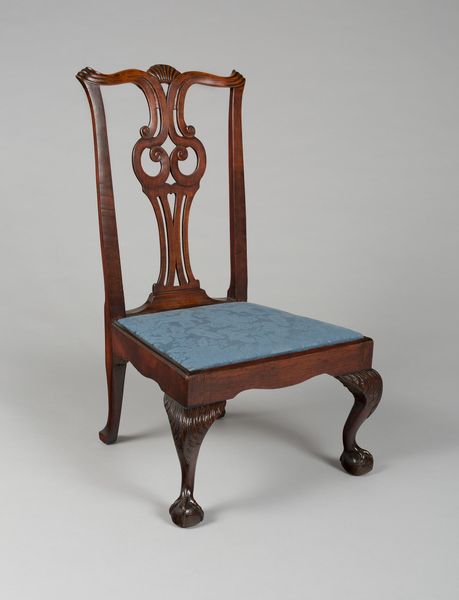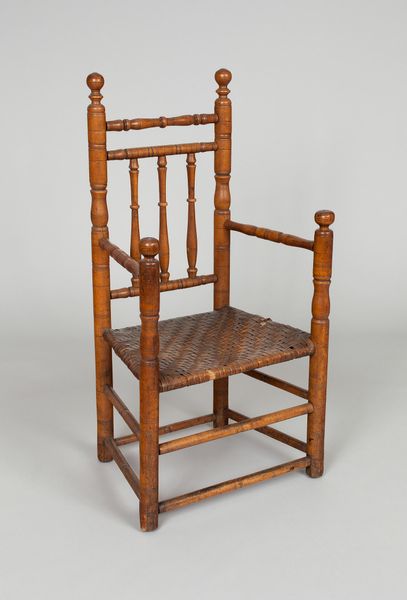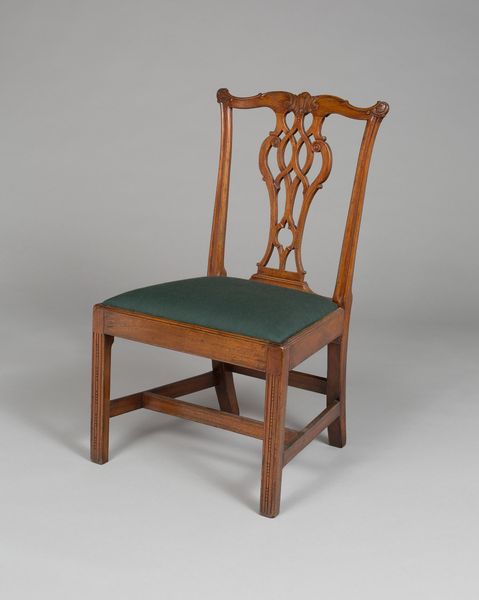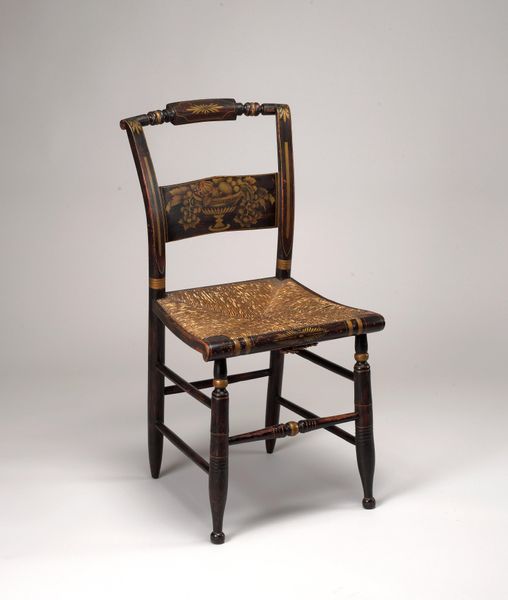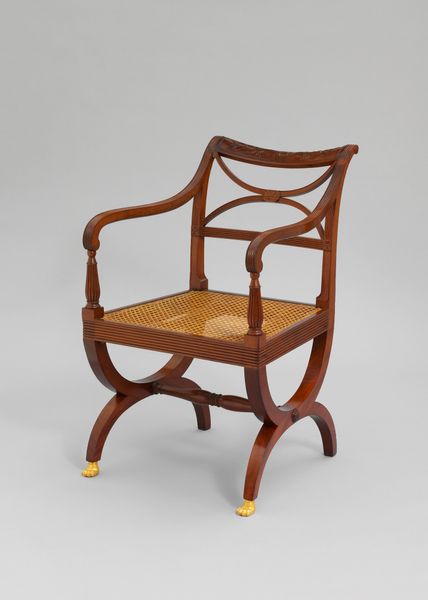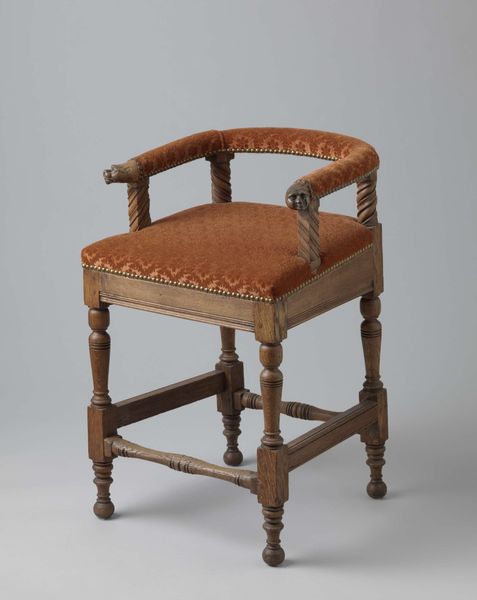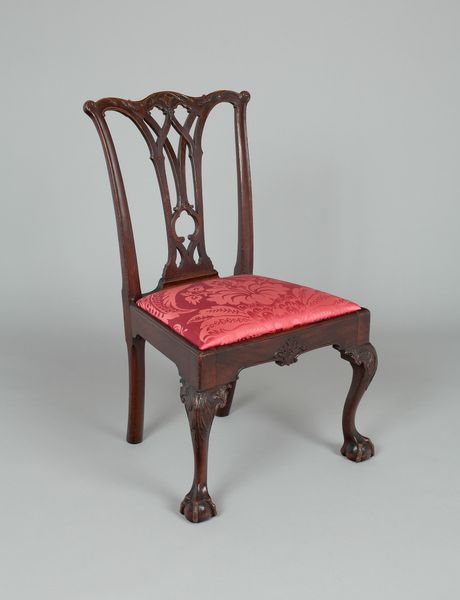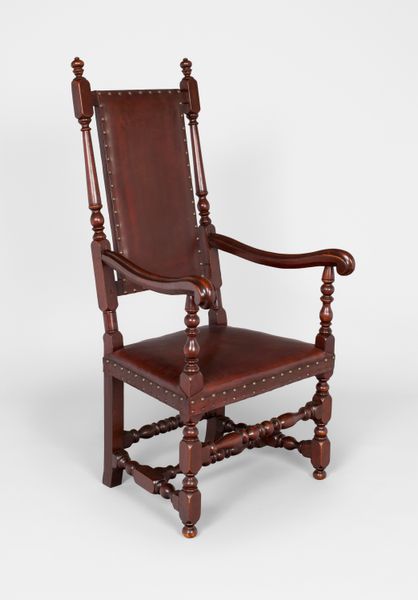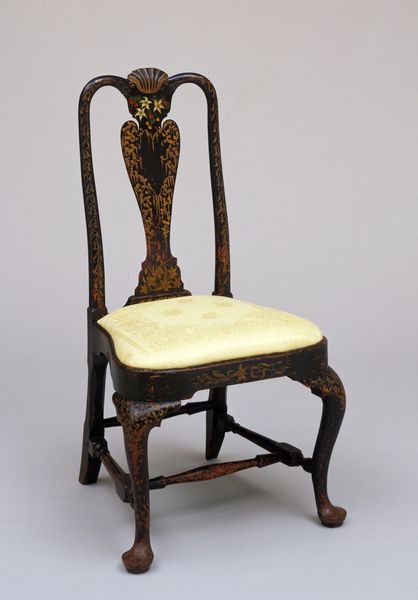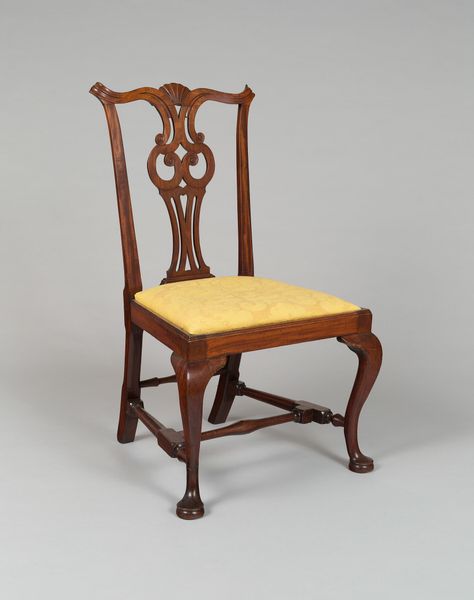
wood
#
furniture
#
united-states
#
wood
#
decorative-art
Dimensions: 59.1 × 37.5 × 24.1 cm (23 1/4 × 14 3/4 × 9 1/2 in.)
Copyright: Public Domain
Curator: It’s intriguing to consider this anonymous "Child's Armchair," made between 1690 and 1710 in the United States, now housed at the Art Institute of Chicago. It’s constructed from wood, a very commonplace, simple, and locally sourced material for furniture in that era. Editor: Yes, it looks like something a carpenter just put together. It’s smaller than I imagined, almost doll-sized. How would you approach understanding a functional piece like this as art? Curator: I focus on the means of its production and the social context. Consider the labor involved. Was this chair made by a professional craftsman, a family member, or even an enslaved person? The materials themselves – the type of wood, the fabric on the cushion – these are revealing too. Does the joinery indicate sophisticated skill, or simple utility? Editor: So, it’s less about aesthetics and more about the labor, the material… kind of the story *behind* the object? Curator: Exactly! Look at the chair's design – so basic. What does its functional form tell us about the daily lives and material realities of children in that era? Editor: That’s a big contrast to the mass-produced children's furniture we have now. We don’t often consider the craftsmanship, or lack thereof, these days. Curator: Right. This armchair challenges the boundary between "high art" and "craft" by drawing attention to the often-overlooked aspects of labor and materiality. How does knowing it's anonymous change your perception of its value or purpose? Editor: I think knowing that the maker is anonymous makes me consider the piece as representative of a whole class of objects. And of course, of the uncredited labour. Curator: Precisely. By considering it from that lens, we’re recognizing the importance of labor, materials, and the complex economic realities that shaped even a simple object like a child's chair. Editor: That perspective shifts the whole focus; I never would have considered its cultural context as labor before! Thanks.
Comments
No comments
Be the first to comment and join the conversation on the ultimate creative platform.
